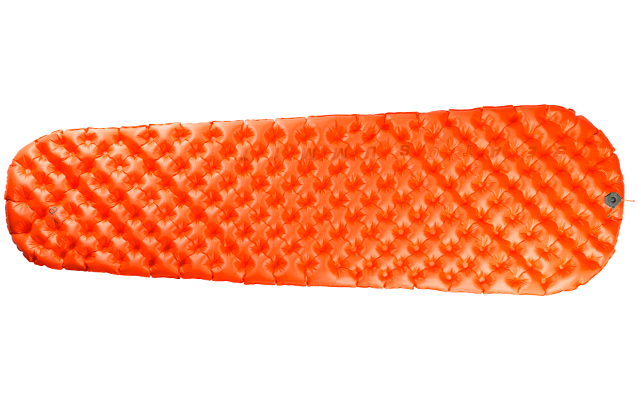Chris Townsend tests out the latest sleeping mats best for the winter months. On test Sea to Summit Ultralight Insulated Regular sleeping mat
Sea to Summit’s new range of sleeping mats have a novel construction method involving small independent air chambers rather than the usual long tubes. This gives the mats an unusual dimpled appearance. The cells deform individually as you move so the mat conforms to your body shape. This does feel comfortable though I haven’t found it any more so than other mats of similar thickness. There are three weights of mat, each available in insulated and uninsulated versions. The Ultralight version is, as you’d expect, the lightest and the lowest in packed bulk. Uninsulated the Ultralight mats only have an R-value of 0.7, definitely not adequate for winter. However the insulated Ultralight has a synthetic fill and an inner reflective layer and an R-value of 2.5. I’d say this was suitable for all but the coldest UK winter conditions. I’ve used it at -1C and been perfectly warm. Cold sleepers might want to look at the Comfort Light Insulated version, which has an R-value of 3.5 and which weighs 580 grams in the Regular length.
An excellent feature of the mat the a multi-function valve. When blowing up the mat it’s one way only so you can take a breath with your mouth away from it without the precious air you’ve just blown in escaping. However for deflation the one-way-section can be pulled out leaving a wide opening so the air is easily squeezed out.
The Ultralight Insulated mat is the lightest tested and a good choice if weight is important.
Reviewed in January 2015 issue







